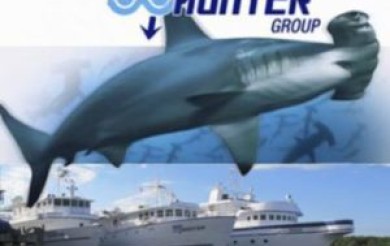Prickly Shark – A Deep Sea Inhabitant of Cocos Island

Photo courtesy from otlibrary.com
Prickly Shark (Echinorhinus cookei)
Max. Length: 400 centimeters
Length at 1st Maturity: 182.3 centimeters
a value:
b value:
Depth Range: 10 – 1,100 meters (30 – 3,630 feet)
Frequency: Usually found in deep-sea environments
You can easily identify this large but sluggish shark through its grey colored stout body that has a black distal fin margin with a white undertone around the mouth going to the ventral portion of its short snout.
It has no anal fin, but instead, it has a subterminal notch on its caudal fin. It has 20 to 23 teeth in each jaw layered in 5 rows of dental system where it has been effective in getting its food where some of its favorite meal are large fish, octopus, squids and other sharks.
A Deep-Sea Experience
While there a few reports of a Prickly shark surfacing up in shallow waters, they are best known to thrive in deep-sea environments like a continental shelf where darkness is absolute.

Photo courtesy from www.universoanimal.blogspot.com
Not unless if you are super lucky to see a prickly shark during your scuba adventures in Cocos Island, the only way to get a glimpse of this deep-sea species is through a submersible.
Once you reach the abyssal zone of the ocean with depths reaching over 1,000 feet, you’re chances of seeing a prickly shark will start to increase. Most of the interaction of a prickly shark occurs in deep seamounts where you can see a prickly shark patrolling near a rocky or sandy substrate. It is not often seen hovering over deep waters and trenches. Since you are using artificial light courtesy from your submersible, a prickly shark may shift into hunting mode where they can easily see their food . . . not you, but fish, squids and octopus.
Prickly it is
Have you ever wondered why its called a prickly shark? If only you could touch the skin of this particular shark, then you would probably know the answer.
A prickly shark has thorn-like denticles which are skin protrusions scattered all around its body. Each denticle can reach up to 4mm in length that is equally spaced in between creating a biological armor for the shark. Kidding aside, it’s just like a shark wearing a chain mail.
Reference
Fishbase: www.fishbase.org
IUCN Redlist of Threatened Species: www.iucnredlist.org
Wikipedia: en.wikipedia.org
Video courtesy from Shark Academy
Cocos Island Liveaboard Trips for 2019
Due to high demand of liveaboard trips to Cocos island, as early as this year, we are publishing the 2019 trips for you to choose your preferred schedule and prepare for the ultimate diving adventure of your life. Reserve your seat to Cocos Island as they are selling like hotcakes. Schedule of Liveaboard Trip to […]











